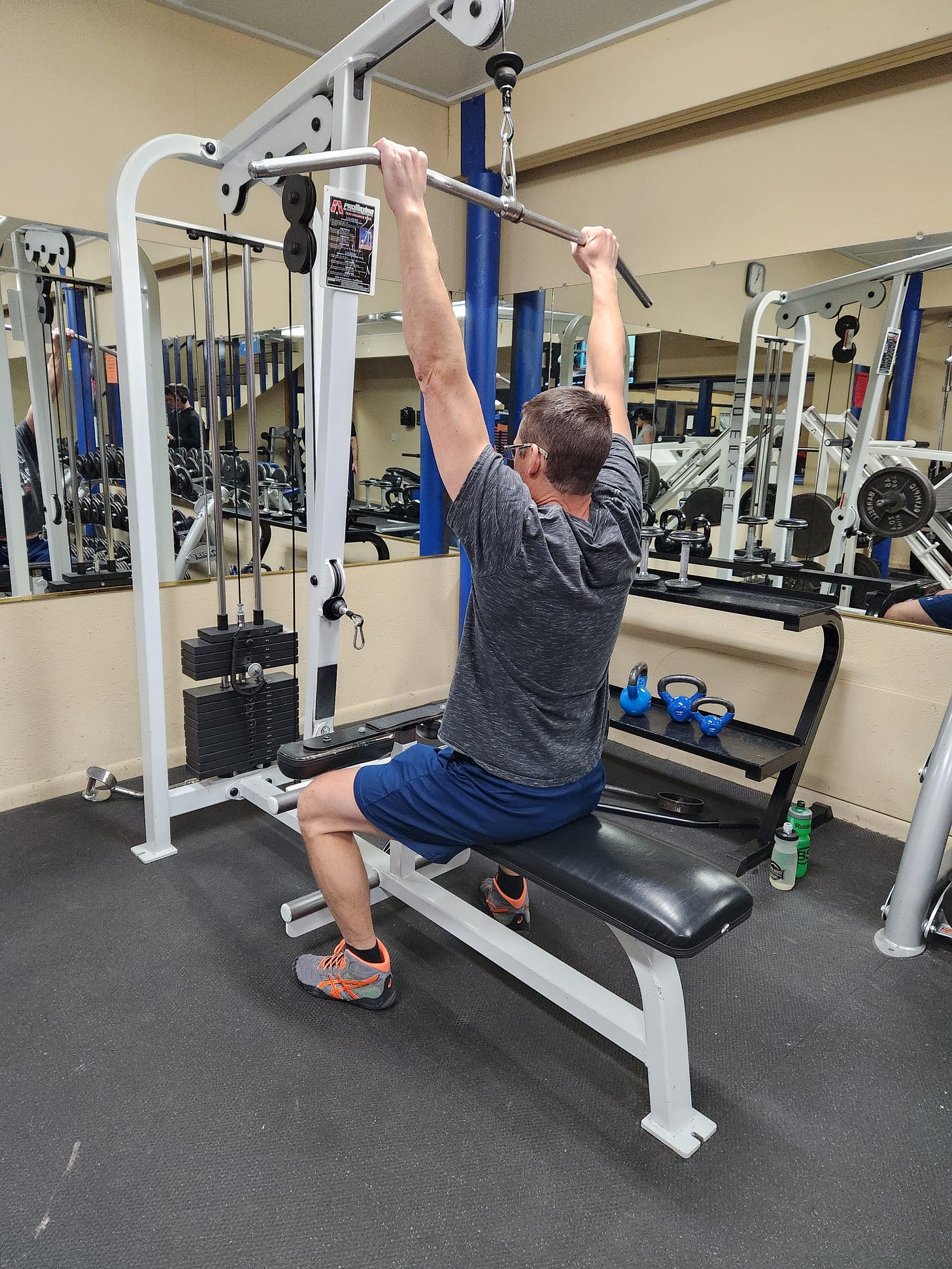Monkeys don't do rotator cuff exercises
nor lateral raises
This is not medical advice.
“Who cares?!” you might be thinking. What’s with all the monkey talk? When I would discuss evolution with a religious friend, they used to comment, “yeah, well go hang with your own kind then.”
I wonder if monkeys have shoulder pain, or rotator cuff tears. They certainly don’t perform our traditional rotator cuff exercises. They do use their latissimus muscles, which is something that we have not focused enough on in rehab.
I’m assuming that the monkey’s shoulders are very healthy, pain free and strong, based on the fact that they can hang all their body weight from one arm. Not only can they support all that body weight with one limb, but they will also catch themselves with one arm after flying through the air. Once you add speed, you are also adding more force. So when the monkey swings and grabs the next branch coming down, they are adding even more force than their body weight onto the rotator cuff.
Can the small rotator cuff muscles hold that ball in the socket? We injure our RTC with far less force. Maybe the larger latissimus and pectoral muscles are just as important for shoulder health. They attach to the same bone as the rotator cuff.
Sometimes we hear that animals are stronger than us, because, well, they’re animals. Are they stronger because the muscle physiology is stronger, or is it because they live like animals? Human muscle physiology is also capable of amazing feats of strength. Top powerlifters can now deadlift 1100 pounds! That funny powerlifter Anatoly who pranks people in the gym only weighs 170 pounds, and was deadlifting over 600 pounds in competition. So we are also very strong, or at least have that physiological potential.
Assuming that monkeys have no rotator cuff issues, what can we learn from their example? I’ve mentioned Dr. Kirsch’s evolutionary theory that our shoulders were built for hanging.
Monkeys seem to have extreme shoulder range of motion. This is ironic in that I am always questioning why we stretch low back pain, or why we stretch hamstrings. It appears that we need as much shoulder range of motion as possible, for healthy, pain free functional shoulders to reach overhead.

Many of the patient’s that I see are extremely tight, very few reach all the way overhead. I had my own rotator cuff tear, and had to stretch out to full motion to be successful. It was excruciatingly painful in the first few weeks, but ultimately successful after six months.
Curiously, I never see monkeys completing straight elbow lateral raises. They don’t act like robots. They intuitively bend their elbows for better leverage when reaching up to grab a branch or food.
Does all this nonsense mean that I don't have patients perform traditional rotator cuff exercises? No. I just think nature holds some preventative advice. Most of my patients can't perform a full hang with their arms. But we can use this device pictured below as training wheels.





